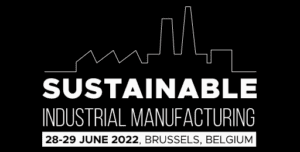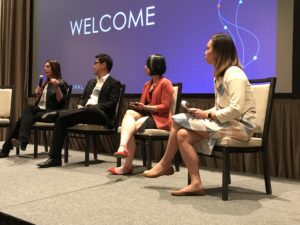Earth Day: 3 Trends Driving Manufacturing ESG Initiatives
As we think about our planet’s limited resources today on Earth Day, one thing is abundantly clear: With manufacturing operations and supply chains now focused on recovering from pandemic disruptions, organizations must rebuild these functions with an eye toward better environmental, social and corporate governance (ESG).
A recent survey by polling firm GlobalData found that 80% of the executives who responded said their company has budgeted for increased spending on ESG. Nearly all respondents (98%) reported that including ESG in corporate decision-making was important or very important.
This financial commitment to ESG reflects growing pressure on C-level executives and their boards of directors. According to the audit, tax and advisory firm Grant Thornton, more than half (57%) of CFOs polled said they had made ESG a priority since the beginning of 2020. While these investments can take many forms, modern technology will play the largest role.
Here are three important ways connected worker technologies can help in achieving corporate ESG goals.
1. Regulatory Reporting
Following the example set by a number of agencies in Europe, the U.S. Securities and Exchange Commission (SEC) last year established a task force on Climate and ESG, designed to identify misconduct related to ESG initiatives. The group is tasked with analyzing corporate disclosures around compliance issues from investment firms. Infractions will result in heavy fines to those companies found in violation of these rules.
Other industries, including manufacturing, are following suit. Compliance with these regulations will take unprecedented visibility into operations including traceability of materials and waste, all of which will require data and analytics. Knowing what data will be needed, where it can be collected and assuring its accuracy will require new systems and data scientists who can help their organization meet its ESG goals and reporting requirements.
By digitizing standard operating procedures (SOPs), connected worker platforms like Parsable can help manufacturers cut everything from time spent on activities to material waste to reducing accidents and injury.
Connected worker solutions can update these SOPs to meet changing conditions on the factory floor to maintain sustainability goals and best practices are met.
2. Supply Chain Documentation
An increasing number of procurement teams today seek documentation and data regarding the production of source material. This is due not only to initiatives to ensure minimal impact on the planet, but also to ensure human rights and worker conditions are maintained. According to CDP, there was a 24% rise worldwide in requests for supplier environmental data in 2020. This increase was even more pronounced in the United States, which saw a jump of 34%.
Requests for this type of documentation originate from the end consumer.
The consulting firm PwC has found that customers between the ages of 18 and 38 are much more likely to factor in a company’s ESG record when making a purchase when compared with older consumers.
For example, Grupo Bimbo uses Connected Worker® by Parsable to provide its management team with visibility into safety at all levels – from the enterprise writ large down to site-specific stats for individual factory sites. These dashboards are part of the bakery’s company-wide sustainability goals and support improvements to its safety initiatives and working environment.
3. Working Conditions
Similar to consumers’ desires to purchase from brands with responsible ESG initiatives, employees, too, increasingly seek to work for an organization with a strong focus on sustainability. A recent study of Millennial employment trends found that nearly two-thirds (64%) of Millennials take a company’s ESG initiatives into consideration when looking for a new job. The polling firm Gallup states that nearly half (46%) of all workers are Millennials or Gen Z, a percentage that is only going to grow as Baby Boomers and Gen X workers retire – either due to age or by opting out of work as part of The Great Resignation.
Where older generations prized ethical leadership, the workforce’s younger generations are more likely to value the impact the company has on the communities in which it operates, as well as the planet as a whole. In fact, three-quarters of Millennials said they would work for a responsible company, even if it meant taking a lower salary; this compares to just 55% of all U.S. workers.
In today’s tight labor market, being able to share the goals and results of its ESG initiatives can be the tipping point in getting the best talent.
Connected worker tools, industrial internet of things (IIoT) networks, 5G connectivity, artificial intelligence (AI), blockchain and other technologies can streamline the security of key operational information around working conditions and worker safety as well as the facility’s impact on the environment.
The key to implementing technology to support and document an ESG initiative is the ability to scale operations in two ways. First, manufacturers that pilot connected worker platforms in a single facility or region, need to be able to replicate that success throughout the entire organization. For global enterprises, this includes a seamless translation of SoPs and other documentation into multiple languages; video often helps. Second, the data and other information that will be required for regulatory and self-reporting will only increase as more systems become connected.
Every manufacturer will need to develop a way to capture its ESG activities. These issues are increasingly important not only to regulators, consumers and employees, but also to investors and community members in the places where the company operates.
If you’re interested in learning more about Connected Worker tools, and how Parsable can help you progress your ESG journey – click here.







